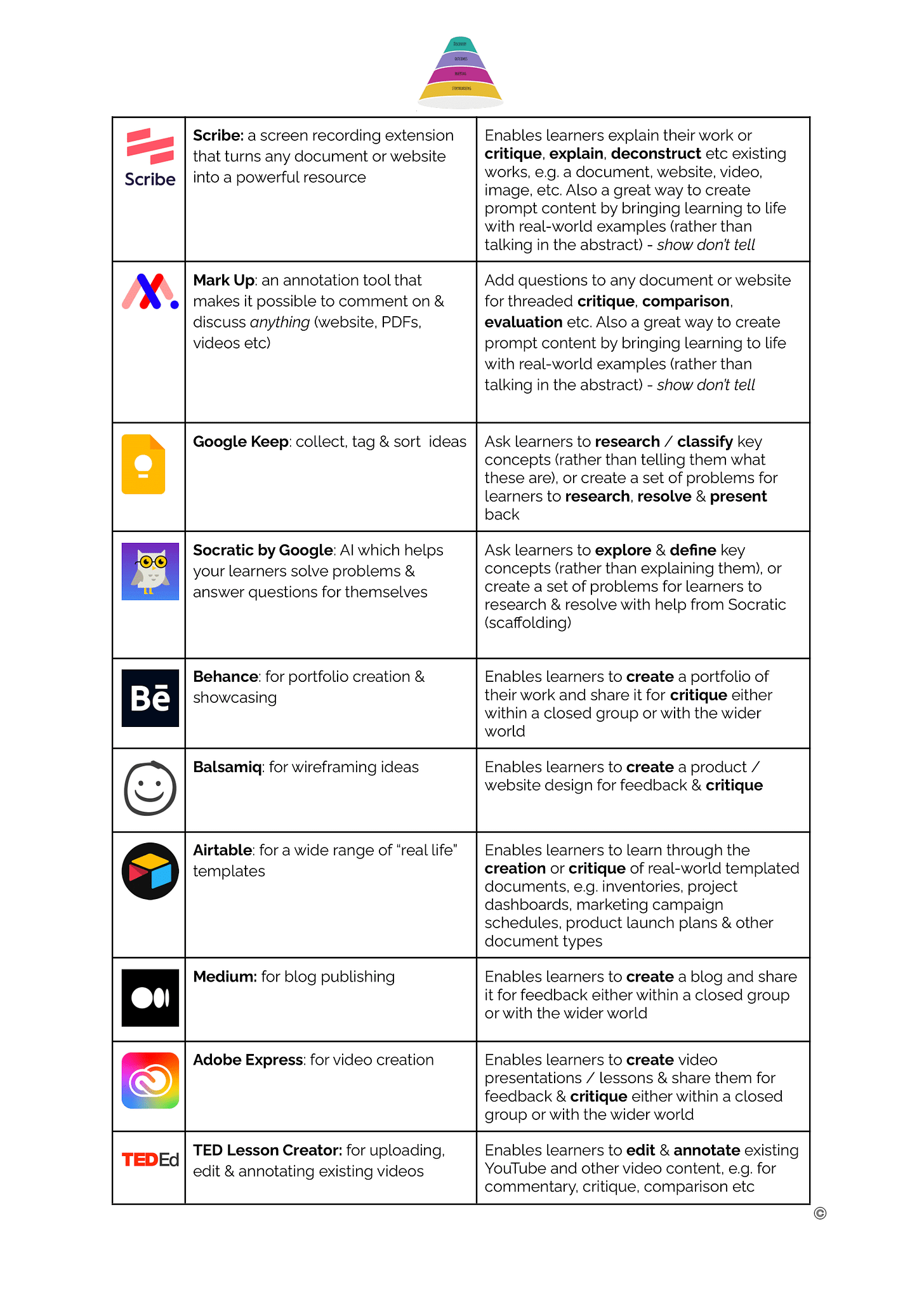The Minimal Viable Course Content Framework in Action
How to turn 80% content into 80% activity (and 10X learner motivation & mastery in the process)
Since writing about the DOMS™️ Minimal Viable Content Framework, a lot of people have asked me: how do I shift from ~80% content to ~80% activity model of course design in practice?
Here’s my answer, in two steps.
Step 1: Define “beyond-quiz” activities
The first step on your journey to an 80% activity design mindset is to broaden your activity design language & practice.
Swap out basic, common verbs like read or watch for more concrete & complex terms like predict, elaborate & explain.
Next, increase motivation & mastery by focusing not just on remembering & understanding but also application, analysis, evaluation & creation.
If you want to skip the hard work and dive straight in, you can use the DOMS™️ Activity Taxonomy here:
Example
Before:
Outcome: You will understand key concepts of Newton’s theory of gravity
Content: Newton’s theory of gravity (8 min video)
Activity: quiz to test learner’s recall of key concepts
Feedback: automated score on quiz questions
After:
Outcome: You will explore Newton’s theory of gravity so that you can explain its key components.
Content: Intro to Newton’s theory of gravity & your challenge (5 min video)
Activity: explore & explain Newton’s theory of gravity, using X tools.
Feedback: responsive qualitative feedback on the work produced or pre-recorded qualitative feedback walking through an example of great for learners to compare to their output. NB. If a score is required: a culminating knowledge check.
Step 2: Deliver “beyond-quiz” activities
A shift from 80% content to 80% activity and from remembering & understanding to applying, analysing etc also requires us to build out our activity toolkits beyond basic quizzing tools.
The highest-leverage way to do this is to find tools which can deliver on the themes (i.e. remember → create) and specific actions (e.g. draw, design, create, explain) in the taxonomy, above.
To get started on your journey, here are ten tools taken from the DOMS™️ Activity Toolkit - a comprehensive list of tried & tested activity tools which map to the DOMS™️ taxonomy, above:
I’d love to hear from you! Use the comments below to share your thoughts. How achievable is a shift to 10/80/10 approach in your world? What big questions & challenges crop up when you consider using the Minimal Viable Content approach?
Happy designing, team! 👋
Want to learn & try the DOMS™️ process for yourself?
Apply for a place on my course creator accelerator, a three week, hands-on adventure where we work together to design a course of your choice using the DOMS™️ process.
The next cohort kicks off in September. You can learn more about the accelerator & see some example content here or jump straight in and apply now using the button below.




Love the sctivity toolkit / so practical!